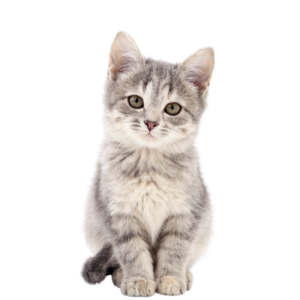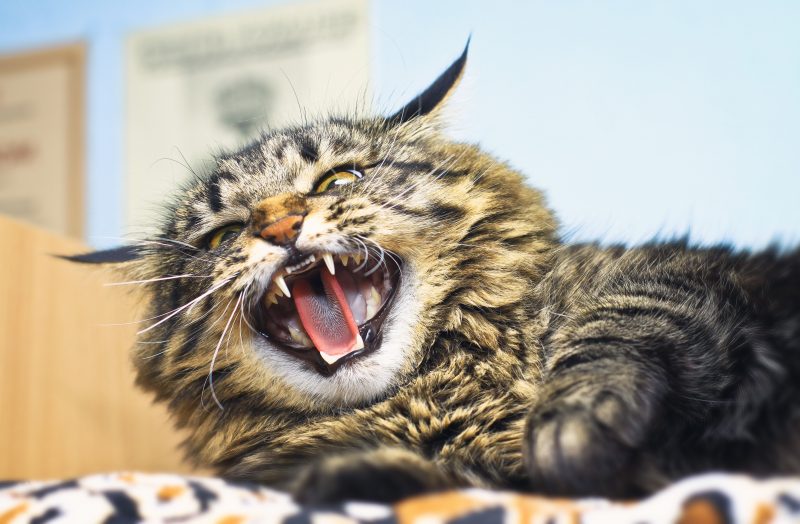If you own a cat then you’ve probably heard the dreaded noise that precedes a hairball. So how do we keep our kitties from those unpleasant hairballs?
Let’s start with where those pesky hairballs come from. Grooming. Cats spend many hours a day grooming themselves and each other if they live with other cats whom they get along with. We don’t want to stop them from grooming themselves but we can help them in their task. By brushing your cat you can help remove the excess fur so that it doesn’t end up in your cat’s mouth, and eventually end up on your carpet when they vomit it up.
Long hair cats should be brushed daily. Daily brushing will also prevent mats in their fur from starting. Mats that are left to their own devices will become larger and closer to the skin. The skin under the mat will become sore and flaky, causing your pet discomfort. If these mats are not caught early enough to be brushed out they will need to be shaved out by either a groomer or at your Veterinary clinic. Short haired cats aren’t prone to getting mats but they will still benefit from frequent brushing. Brushing your cat can also be a bonding experience between you and your cat.
There are a variety of brushes out there for cats. You might have to try a few before you find one that works well for your cat and that your cat enjoys being brushed with. If your cat is not overly fond of being brushed then you may need to start slow and with a soft brush. Once they become use to being brushed you can try a bristled brush or a Furminator. Furminators are a more costly brush but they are very effective and pay for themselves in the long run. They come in a variety of sizes and also for long or short fur.
Another helpful product for hairballs is Laxatone. Laxatone is a gel that your cat eats to help hairballs to easily pass through the digestive system. It works as a lubricant and a laxative. The gel can either be placed in your cat’s wet food or you can place it on their paw for them to lick it off. It comes in two flavours to ensure your cat enjoys the taste of it. The more hairballs that pass easily through your cat means less vomiting and less early morning surprises for your slippers.
Getting your cat into the bathtub can be quite the challenge and sometimes even dangerous! A bath may help with your cat’s hair coat to keep them clean, prevent mats and to take out some of the loose hair. You don’t want to over bath your pet as it will remove their natural skin oils. If you do feel your cat needs a little something extra without getting them into the tub you can try a mousse shampoo. They are similar to a dry shampoo that you may use on your own hair. The mousse can also help in the winter if your cat tends to have extra static in their fur. The extra static can cause some discomfort to your cat and lead to aggressive grooming and possibly running around your house like a crazy. Applying the mousse to their fur can also help moisturize any dry skin.
Getting into a good grooming routine when your cat is young is a great habit. Some cats tend to groom themselves less as they age, which may seem like a good thing as there might be less hairballs! But this can lead to their coats not having that lustre it once did. With a little extra effort from you, your cat can keep its beautiful coat into their golden years. A good quality diet and the addition of Omega 3’s to your cat’s diet can help their coat lustre. Always consult your Veterinarian before starting your pet on any supplements to ensure they are appropriate. A decrease in grooming and a lack lustre coat can be a sign of an underlying medical condition. If you are concerned that something may be going on with your pet it’s always best to talk to your Veterinary Clinic.
Written by Nicki Payne, RAHT



